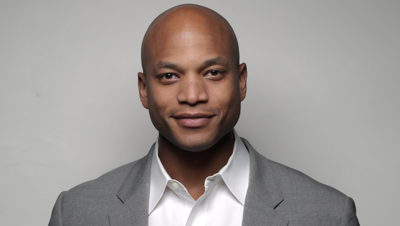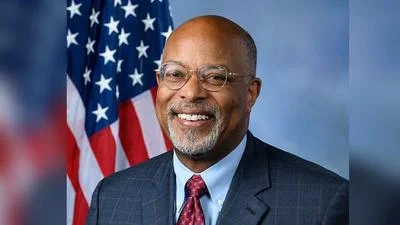The publication is reproduced in full below:
Cloture Motion
Mr. SCHUMER. Mr. President, I send a cloture motion to the desk.
The PRESIDING OFFICER. The cloture motion having been presented under rule XXII, the Chair directs the clerk to read the motion.
The legislative clerk read as follows:
Cloture Motion
We, the undersigned Senators, in accordance with the provisions of rule XXII of the Standing Rules of the Senate, do hereby move to bring to a close debate on Calendar No. 1, Treaty Document No. 112-8, Tax Convention with Chile, and a resolution of advice and consent to ratification with 2 reservations and 2 declarations.
Charles E. Schumer, Robert Menendez, Margaret Wood
Hassan, Robert P. Casey, Jr., Benjamin L. Cardin,
Catherine Cortez Masto, Patty Murray, Thomas R. Carper,
Christopher Murphy, Chris Van Hollen, Tammy Baldwin,
Jack Reed, Richard J. Durbin, Tim Kaine, Jeanne
Shaheen, Richard Blumenthal, Christopher A. Coons, Cory
A. Booker.
Mr. SCHUMER. I ask unanimous consent that the mandatory quorum calls for the cloture motions filed today, June 15, be waived.
The PRESIDING OFFICER. Without objection, it is so ordered.
Mr. SCHUMER. Mr. President, I ask unanimous consent that the Senator from Illinois be given 10 minutes to speak immediately and, following her, 5 minutes to the Senator from Massachusetts.
The PRESIDING OFFICER. Without objection, it is so ordered.
Mr. SCHUMER. I yield the floor.
The PRESIDING OFFICER. The Senator from Illinois.
FAA Reauthorization Act of 2023
Ms. DUCKWORTH. Mr. President, I rise today as both chair of the Subcommittee on Aviation Safety but, more importantly, as a pilot who is only alive because of the swift actions of an experienced flight crew.
I have lived the experience of piloting a Blackhawk that was struck by a rocket-propelled grenade in flight and entered into flight conditions immediately that flight simulators taught me would be catastrophic. But having the experience of flying in the toughest conditions had shown me that that was not the case.
I have probably spent more hours in the most sophisticated flight simulators than any other Senator of this body, short of, of course, Senator Kelly, our astronaut. In my over a decade of training as a military pilot, every time--every single time--that we simulated a total loss of all aircraft avionics that would follow with a total loss of hydraulic power, we died in that simulator. We did this every year, and we simulated it over and over. It was not survivable.
We never simulated an RPG explosion in the lap of one of the pilots wherein any of the crew could survive. Why did we never simulate that condition? Nobody ever imagined that it would ever happen and have the crew survive or that the aircraft would not break apart in flight.
Yet, on that day in Iraq--on that day when that rocket-propelled grenade landed in my lap and exploded--we did. The aircraft held together, and we survived it. We were 10 feet above the trees, and we looked, and we had no avionics, and we could tell that the hydraulics were next. If we had relied on that simulator training, we would have done what dark pilot humor had always said, which was: You are going to die anyway. Let's change spots and leave a mystery for the acting investigators to figure out what the heck happened.
But we didn't. We fought to fly that aircraft because our training in the cockpit, in real-world flight conditions, taught us that we could do it. Led by the expertise of my pilot in command, we landed that aircraft and saved our entire flight crew.
I would not be alive today but for the in-cockpit experience gained through many hard-earned flight hours over a decade of training. It was actual, real-world experience, not a flight simulation, that made us prepared and ready to respond to a life-threatening emergency, with level heads and swift action--with instinct.
Of course, my experience is not unique. When the hero of the Hudson, Captain ``Sully'' Sullenberger, implores Congress to understand that the combined 40,000-plus flight hours between him and his first officer were critical in saving 155 lives on that January 15, 2009, day, we should listen.
Do you think that, prior to that day, there were any flight simulations of a dual-engine failure from a bird strike, followed by ditching in the Hudson River, by any airline? by any flight school? No. In fact, when that very simulation was done after the miracle on the Hudson, even with the flight crews experiencing and expecting the scenario, they still crashed time after time in that simulated emergency. It was pilot in-cockpit flying experience that saved the miracle on the Hudson.
My experience as both a pilot, who was responsible for the lives of my crew and passengers in the most hazardous conditions, along with my commitment to my leadership role on the Aviation Safety Subcommittee, means that I cannot be complicit in efforts to compromise on safety for the flying public. There has never been a worse time to consider weakening pilot certification requirements to produce less experienced pilots.
The year 2023 has already been chilling for our civil aviation system. We have witnessed a disturbing rise of near deadly close calls that has led the FAA to convene an unprecedented safety summit, where the Acting Administrator has warned that the entire aviation industry needs to not grow complacent because complacency kills.
The NTSB has treated a recent uptick in near misses as a national crisis and has investigated these incidents to determine whether systemic problems are a root cause. Some observers believe the surge in hiring that was necessary to address the perfect storm of pre-pandemic buyouts and the post-COVID travel boom has simply resulted in a less experienced workforce that is more prone to mistakes.
We must treat these unnerving near misses as red flags and be proactive in strengthening safety requirements to make sure that these close calls do not become precursor events to a catastrophic incident.
The last thing we should be doing is weakening part 121 certification standards. We have had seven close calls most recently, and the answer is not ``let's reduce pilot training.'' It is the pilot who prevented those close calls from becoming accidents in the first place.
As a pilot, I learned the value of real-world experience. Trust me. Hours in that cockpit, in the sky, matter. Simulators are a valuable training tool. I applaud them, and I have made use of them, but they are no substitute for the real thing. Lifesaving instincts are earned through hours of hard work and dedication through the craft of piloting a real aircraft with real stakes.
Look, I know the experience of the perfect storm of major carriers buying out thousands of their most experienced pilots, followed by a post-pandemic surge in air travel demand, has created a temporary shortage of pilots and first officers, especially for regional airlines. The consequences for communities, especially with rural airports, have been real and painful. I see them myself in my own home State. I understand the temptation to cut corners or to chase the false promise of a quick fix to a systemic challenge. But weakening a pillar of our post-Colgan reforms won't magically solve the need for more pilots.
Believe me. I have asked for the specifics. If we reduce the minimum flight hours from 1,500 to 1,000, how many more pilots would be available in the following calendar year? What about 800 hours? What if we drop it to 500 or to 250? How many more pilots would you have then? Yet, today, I have received no precise estimate, let alone any credible projections.
At this point, I question whether the special interests pushing to weaken the 1,500-hour rule even have a methodology or model to measure the relationship between certain certification standards and the availability of pilots.
I am not the only one who has stress-tested industry assertions and come away with more questions than answers. Last year, the FAA rejected a petition for an exemption to the flight hours requirement and explicitly stated:
The FAA has previously concluded the argument that an exemption would serve to address a pilot shortage is overly simplistic and does not present a persuasive argument.
Foreign carriers that are not subject to the 1,500-hour rule are also experiencing workforce challenges post-pandemic. Yet they are not reducing their requirements. This bolsters the FAA's conclusion.
Simply put, reducing hours, even just for restricted ATPs, represent a serious risk with no reward. It represents an unacceptable backsliding, a dangerous complacency, in an industry where complacency kills. As chair of the Aviation Safety Subcommittee, as a professional aviator, and as a private pilot, I am holding the line on safety.
I want to encourage my colleagues to focus on the long list of other, more urgent aviation issues facing our country. Now is not the time to go backward on a post-Colgan safety system, and there has not been a single aviation fatality due to pilot error since the 1,500-hour rule was put into effect.
Now is not the time to put corporate profits ahead of the lives of our constituents who may want to board a commercial flight in the future. A vote to reduce the 1,500-hour rule for pilot training will be blood on your hands when the inevitable accident occurs as a result of an inadequately trained flight crew.
I urge my colleagues to uphold the 1,500-hour rule.
I yield the floor.
The PRESIDING OFFICER. The Senator from Massachusetts.
SOURCE: Congressional Record Vol. 169, No. 105
The Congressional Record is a unique source of public documentation. It started in 1873, documenting nearly all the major and minor policies being discussed and debated.
Senators' salaries are historically higher than the median US income.





 Alerts Sign-up
Alerts Sign-up